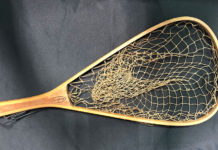I have a hunch that sweeping the town of Guerneville may be more
fulfilling than sweeping a city like Sebastopol or Healdsburg or
Windsor.
Maybe it¹s because those places have paid public works people to
sweep the streets so you expect them to be clean. And they are,
almost immaculate compared with Guerneville, where bushels of
litter still decorate the roads into town in spite of last May¹s
Big Spring Cleanup when it seemed like a zillion volunteers spent a
whole week trying to tidy up the place. I agree the cleanup was a
rewarding and worthwhile effort even if the surprising new sheen of
relative neatness only seemed to last for a few hours.
When I walked into Guerneville last week on Highway 116
everything looked back to normal. Red plastic beer cups, Coke cups,
empty booze bottles, an empty bottle of Snapple, some 16-ounce
Coors Lite cans and foam take-out food containers were scattered
along the road near the Welcome To Guerneville sign, the one that
says ³Heart of the Russian River.²
Heart? How about lower intestine? How about garbage pit?
Crossing the Fife Creek Bridge there¹s a meadow full of
mattresses and rags where the homeless people camp. Volunteers
cleaned that mess up last year but now it¹s back. Alongside the
creek Brookside Lane is a complete joke ‹ trash every step of the
way, discount coupons, napkins, takeout cartons, bags, tinfoil,
newspapers, an empty red and yellow Lays Classic potato chip bag.
Main Street is a little tidier, maybe because someone cleans it;
but if anyone does, no one seems to know who it is. Dawn Bell, the
new Russian River Chamber of Commerce Executive Director (who has
been enthusiastically supportive of recent efforts to keep the town
clean), doesn¹t know, and neither does Margaret Kennett, who with
her husband Michael owns Fern Grove Resort and helped put together
this year¹s first annual Big Spring Cleanup.
Margaret has been looking for volunteers lately to continue
cleaning up the chronically trashy parts of town.
³Just from my perspective, the park and ride lot, and Fife
Creek,² said Margaret, when asked where some of the places are that
always seem to need work. ³Main Street. The old bank building.²
Perhaps buoyed by the success of the Spring Cleanup, Margaret
sounds cautiously optimistic that more people might be willing, on
a regular basis, to lend a hand in the war on litter. At the River
Chamber of Commerce office on First Street nowadays they¹ll give
you trash bags and a dustpan should you happen to feel like rolling
up your sleeves and attacking the sullied landscape.
³I would like to see more volunteers,² said Margaret. ³I¹m
hoping people will form their own cleanup crews and just keep an
eye on an area, a certain patch. If anyone wants to call me I would
love to hear from them. I think we have something very special to
look after here. We just need to step up to the plate.²
The old Guerneville Bridge is on the National Register of
Historic Places but that doesn¹t mean it gets any respect from
people who need to discard a paper cup or an empty bottle when
walking across it. The afternoon breeze blows dirt and cigarette
butts into little drifts like miniature sand dunes that build up on
the bridge until someone decides to do something about it.
I helped sweep the Guerneville Bridge for the first time in
December, 2003 as part of a cleanup effort put together by Wayne
Skala, who has the antique shop on the town plaza. When cleanup
time arrived I grabbed my old broom off my front porch and drove
into town not knowing what to expect.
Skala was in front of Herman Hernandez¹ real estate office with
several people carrying brooms, green garbage cans and cans of
beige paint. Mark Crescione from Creekside Lodge was there and so
was Tom Glover Jr. from Pee Wee Golf. We spent the afternoon
cleaning the bridge: sweeping it, leaf-blowing it, and painting
over graffiti. I made some notes about the experience. ³Feels good
to sweep the bridge,² a note said. ³Sweeping is hypnotic and
rhythmic.²
That was when I started to think about a broom as gear, or an
instrument, maybe even a sort of dancing partner or at least a tool
that you would want to select with a certain amount of care. The
broom I had grabbed off my front porch was an old nondescript
household broom that was OK for sweeping the porch but was too
small and worn out for the Guerneville Bridge job.
I began researching brooms online. There was a movie, ³Men with
Brooms,² about the game of curling. There was a ³brooms as an art
form² website that said ³Brooms as art were stifled in their
infancy by the invention of the broom machine.²
There was a picture of two guys holding art brooms, which didn¹t
look like brooms you could actually use to sweep a street. One
looked like two brooms put together with their handles twisted
around like wires. The other one looked like a large two-handled
whiskbroom with a striped tail.
Janitorialsupplies.com had some interesting basic brooms. What I
was looking for was called an upright broom, not a ³street broom,²
which some people would call a push broom. Within the upright
category there were brooms made with natural and plastic fibers. A
plastic-fiber ³maid broom² was made of blue straws held together
with three rows of horizontal blue threads. It looked kind of
cheesy, like a broom you might find in an office closet.
I looked at upright natural fiber brooms, parlor brooms, and
larger warehouse brooms. The most expensive upright natural fiber
broom was a corn fiber warehouse model that cost $79.54 per dozen.
You couldn¹t buy just one. Mixed-fiber maid brooms were $45.63 per
dozen. The appeal of the mixed-fiber maid brooms, besides the red
stitching across the yellow corn straws on the outside and the
³pliable yucca fiber² on the inside, was that it was ³designed for
sweeping concrete,² which is what the Guerneville Bridge road bed
is made of.
Eventually I bought a new warehouse broom at Costco. It was a
No. 1 grade corn broom made by the National Broom Company, maker of
³America¹s Finest Brooms,² according to the plastic wrapper. ³A
durable hand-made American product,² said the wrapper. ³Square
shoulder construction 100 percent hardwood handle six rows of
stitching.²
It said the broom was manufactured to ³ASTM standards² but I had
no idea what that meant. Next to the bar code it said ³Harper Brush
Works, Inc.² of Fairfield, LA and Stockton, CA.
It was a good-looking hefty warehouse broom with a natural wood
handle, six rows of red stitches and a red velvet ring around the
silver metal coil that attaches the broom¹s corn straw to the
handle. It cost $5.89. I had seen a similar broom priced at more
than twice that amount at a local hardware store. So much for the
rewards of shopping locally.
The new broom¹s label depicted two men at work in a cornfield.
They looked like they were dressed for the 18th or 19th Century, in
britches, blousy white shirts and brimmed hats, and they appeared
to be gathering corn stalks and tying them into bundles. They were
making brooms.
With Margaret Kennett¹s words about stepping up to the plate in
mind, I went into town the other day carrying my Costco warehouse
broom. I arrived at the Guerneville Bridge at 2:30 on a Friday
afternoon. Young men loitering in the town plaza were calling each
other vile hateful names and giving each other the finger. ³There¹s
a lot of hostility there today,² said Valerie Munthe, one of the
River Chamber office greeters, watching the plaza cretins.
Valerie provided me with a plastic bag and a dustpan. The
bridge¹s main span looked relatively clean but the northern
approach was lined with debris. I set my bag down and began to
sweep. I thought about George McPherson, who used to sweep downtown
Guerneville as a volunteer. He has a memorial plaque in the
sidewalk at the corner of Main Street and Armstrong Woods Road. I
thought of Ian Frazier, the New Yorker writer who dedicates part of
his life to removing plastic bags from trees and invented a device
he calls the bag snagger to pluck bags stuck high up in tree
branches. I imagined him having a field day with his invention in
Guerneville after a flood. I thought about Leo Morgan, the bird man
of Monte Rio, who used to gather up litter wherever he walked along
the Russian River and who painted ³bird sanctuary² in red letters
on the Monte Rio Bridge. Leo believed he was Jesus Christ and that
litter represented the devil¹s presence.
Sweeping outdoors in a breeze is a challenge because the stuff
you¹re trying to contain sometimes wants to blow away. I was
sweeping up dust, food wrappers, bottle caps, plastic cups and lots
of cigarette butts. A tip for sweeping in a breeze is to take it
easy, use short strokes and keep the pile concise.
Most people on the bridge totally ignored me. Maybe they thought
I was a criminal sentenced to do community service.
After about an hour I had a bag full of dust and trash. ³You¹re
a trooper,² said a woman riding past on a bike and drinking
something out of a paper cup. ³I like what you¹re doing.²
56
F
Healdsburg
July 8, 2025









